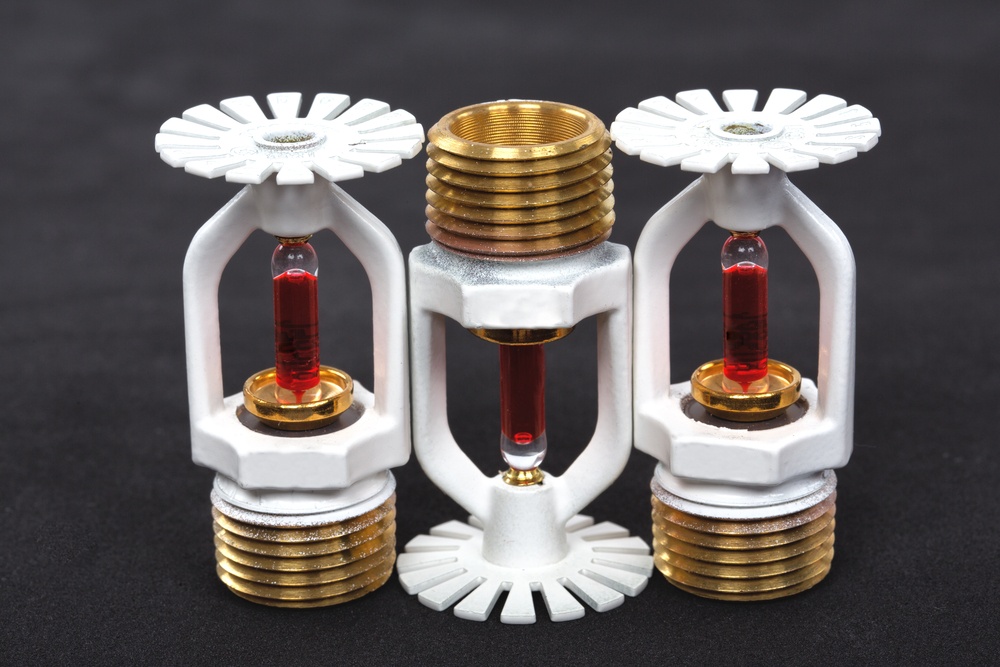Cost-Effective Solutions to Meet Local Law 26

Local Law 26 of 2004 was created to improve the fire mitigation capabilities of NYC buildings, and to allow safe evacuation during an emergency. The law outlines many requirements, but perhaps the most demanding is to install an automatic sprinkler system for all buildings with a height of at least 100 ft, and classified as Business Group E as of 2004 (business occupancies are now called Group B).
All buildings covered by LL26 were required to have automatic sprinkler system and a certification of compliance by July 1, 2019. The project and its corresponding investment can be sizable in a large building, and this article will give you some recommendations to meet LL26 while optimizing costs.
1) Get Professional Consulting and Design Services
A basic rule in engineering is that cost savings start from the design phase. In the case of sprinkler systems, you will want a layout that provides full building coverage with the lowest number of sprinkler heads and shortest piping length that is feasible. Ideally, the design firm and installation contractor should be separate companies, since that ensures the system layout is specified by a neutral third party.
Keep in mind that the fire protection requirements established in NYC building codes are among the most demanding in the world, and in the case of LL26 there was a deadline to meet (July 1, 2019). Ideally, the sprinkler system design should fully meet NYC codes from the first version, completing paperwork as soon as possible and proceeding with installation. Remember that only Registered Design Professionals can obtain project permits from the NYC Department of Buildings, giving you even more reasons to work with qualified designers.
2) Optimize Standpipe Design to Reduce Costs
Standpipe requirements are determined in great part by sprinkler system characteristics, so it is in your best interest to design a system that minimizes standpipe costs. For example, all high-rise buildings require Class III standpipe systems, which have the following features:
- 1.5-inch hose connections for buildings occupants
- 2.5-inch hose connections for the NYC Fire Department
However, if the building is fully equipped with automatic sprinklers, the code allows a simpler Class I standpipe, as long as it meets the requirements in Article 905.3 of the NYC Building Code. These requirements include the locked storage cabinets with firefighting equipment every 10 levels starting at the bottom floor, and using hose valve caps that are fastened to their respective valves with chains.
3) Get a Sprinker System Design that Simplifies the Installation Process
Installing a sprinkler system in an occupied building can be disruptive, especially when sprinkler heads are required above offices and other workspaces. However, fire protection engineers can simplify sprinkler installations in occuped buildings with smart design features. The following are some examples:
- Designing a layout where sprinkler mains run above corridors or other areas that are not workspaces, to simplify their installation.
- Using exposed sidewall sprinklers whenever possible in occupied areas, to minimize ceiling work.
Working with a contractor who performs night work is also recommended. This comes with an extra labor cost, but it may be necessary to install sprinklers without disruption in occupied areas. Also consider that LL26 violations generate quarterly fees, and installing sprinklers quickly will pay off.
4) Schedule Sprinkler Installation with other Building Upgrades
Installation of an automatic sprinkler system can be very disruptive for a building, since it is necessary to install piping above the ceiling. In the case of large office buildings like those covered by LL26, you will also need an automatic wet standpipe and a fire pump. The fire pump can be avoided in smaller buildings by using a manual standpipe, but this is not possible in high-rise constructions, where the automatic wet standpipe is mandatory.
Since a large-scale building modification will be carried out, it represents an opportunity for other building upgrades that would also be disruptive as separate projects. For example, if the building uses inefficient T12 fluorescent fixtures, you can schedule an LED retrofit along with sprinkler head installation. You can also inspect air ducts and other similar systems that are typically above the ceiling.
If you have planned a major renovation with interior architectural changes, arrange a meeting between the architects and the sprinkler system designers. They can work together to ensure full sprinkler coverage with the lowest sprinkler head count, according to the proposed architectural modifications.
5) Start the Project as Soon as Possible
As of December 2019, the deadline to have a fully-sprinklered building was almost six months ago, and the project can take over a year for design, installation, paperwork and inspections. Since the NYC Department of Buildings issues quarterly fines for LL26 violations, it is in your best interest to proceed as soon as possible.
If you take too long, both the design firm and installation contractor may have to work overtime, which translates into a higher labor costs and a more expensive project. Starting the project soon minimizes the risk of a late delivery and helps reduce project cost.
Remember a basic rule of project management: when dealing with scope, cost and time, you must give up on one aspect to enhance another. Since scope cannot be compromised when dealing with fire protection systems, the only way to speed up an automatic sprinkler system project is by paying more. Do not underestimate the time required to fully equip a large building with automatic sprinklers.

Anuj Srivastava
Anuj Srivastava is a principal partner at NY Engineers. He is known for his MEP franchise market knowledge. Anuj is currently leading a team of 100+ MEP/FP engineers and has successfully led over 1500 franchise projects in the US.
Join 15,000+ Fellow Architects and Contractors
Get expert engineering tips straight to your inbox. Subscribe to the NY Engineers Blog below.


